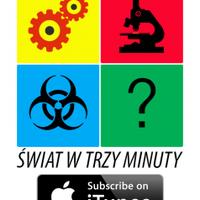Jak zmierzyć odległość do gwiazd?
|измерить|расстояние||
How|to measure|distance|to|stars
Wie misst man die Entfernung zu den Sternen?
¿Cómo se mide la distancia a las estrellas?
Comment mesurer la distance des étoiles ?
Как измерить расстояние до звезд?
Hur mäter man avståndet till stjärnorna?
Як ви вимірюєте відстань до зірок?
How to measure the distance to stars?
Najbliższa gwiazda: Słońce.
Nearest|star|Sun
Der nächste Stern: die Sonne.
The closest star: the Sun.
Światło słoneczne leci do nas 8 minut.
Light|sunlight|travels|to|us|minutes
Das Sonnenlicht fliegt 8 Minuten zu uns.
Sunlight takes 8 minutes to reach us.
Kolejna – Proxima Centauri.
||Центauri
|Proxima|Centauri
Next|Proxima|Centauri
Ein anderer - Proxima Centauri.
The next one - Proxima Centauri.
Jest od nas tak daleko, że światło od niej leci do nas 4 lata.
It is|from|us|so|far|that|light|from|her|travels|to|us|years
It is so far from us that light from it takes 4 years to reach us.
Najdalszy obiekt stworzony ludzką ręką to sonda Voyager 1, która przemierza kosmos od 1977 roku.
|||человеческой|рукой||сонда|||продвигается|||
||geschaffen||||Sonde|||durchquert|||
farthest|object|created|human|hand|is|probe|Voyager|which|travels|space|since|year
Das am weitesten entfernte Objekt, das von menschlicher Hand geschaffen wurde, ist das Raumschiff Voyager 1, das seit 1977 im Kosmos unterwegs ist.
The farthest object created by human hands is the Voyager 1 probe, which has been traveling through space since 1977.
Obecnie jest jakieś 18 miliardów kilometrów od nas.
Currently|is|about|billion|kilometers|from|us
Er ist derzeit etwa 18 Milliarden Kilometer von uns entfernt.
It is currently about 18 billion kilometers away from us.
Na rok świetlny, czyli 1/4 odległości do Proxima Centauri, oddali się za jakieś 18 tysięcy lat.
||световой|||||||||||
||Lichtjahr||Entfernung|||||||||
In|light year|light|that is|distance|to|Proxima|Centauri|will move away|themselves|in|about|thousand|years
Für ein Lichtjahr oder 1/4 der Entfernung zu Proxima Centauri gaben sie für etwa 18.000 Jahre auf.
In light years, which is 1/4 the distance to Proxima Centauri, it will have moved away in about 18 thousand years.
Skąd wobec tego wiemy, jaki jest dystans do odległych gwiazd, skoro jeszcze nikogo tam nie było?
||||||расстояние||||||никого|||
|angesichts|||||||fernen|||||||
Where|in light of|this|do we know|what|is|distance|to|distant|stars|since|yet|nobody|there|not|has been
Wie können wir wissen, wie groß ist die Entfernung zu fernen Sternen, wenn dort niemand sonst ist?
So how do we know the distance to distant stars, since no one has been there yet?
Zapraszam do słuchania… Tym razem zamiast dosłownego zapisu odcinka, podsumowanie najważniejszych podanych w nim faktów.
||||||wörtlichen|Aufzeichnung||Zusammenfassung|der wichtigsten|gegebenen|||
I invite|to|listening|This|time|instead of|literal|transcript|episode|summary|most important|provided|in|it|facts
Ich lade Sie ein, zuzuhören ... Diesmal statt die Episode buchstäblich aufzunehmen, eine Zusammenfassung der wichtigsten Fakten, die darin enthalten sind.
I invite you to listen... This time, instead of a literal transcript of the episode, a summary of the most important facts presented in it.
W końcu chodzi o wiedzę, a nie o otoczkę, prawda?
||||||||обертку|
||||Wissen||||das Beiwerk|
In|the end|it matters|about|knowledge|and|not|about|appearance|right
Schließlich geht es um Wissen, nicht um den Umschlag, oder?
In the end, it's about knowledge, not the packaging, right?
Z czwartego odcinka Świata w trzy minuty dowiecie się m.in.
From|fourth|episode|World|in|three|minutes|you will learn|reflexive particle||
Von der vierten Episode der Welt in drei Minuten wirst du unter anderem lernen
From the fourth episode of The World in Three Minutes, you will learn, among other things.
: jaka jest najbliższa gwiazda (poza Słońcem) – i nie jest nią wskazana przez Encyklopedię Britannicę Alfa Centauri; że sonda Voyager 1, wystrzelona w kosmos w 1977 roku (i media wielokrotnie ogłosiły, że już dotarła na granicę układu słonecznego) do najbliższej (po Słońcu) gwiazdy leciałaby 18 tysięcy lat; że wbrew pozorom jazda samochodem ma wiele wspólnego z mierzeniem dystansu do odległych obiektów; że każdej minuty, dzięki ruchowi obrotowemu Ziemi, pokonujemy (w Polsce) 285 metrów.
||||||||||указанная||Энциклопедия|Британика||||||выпущенная||||||медиа||объявили|||достигла||||||||||летела бы||||||поездка||||общей||измерением|||далёких|||||||||покоряем|||
|||||||||ihr|angegeben||Enzyklopädie|Britannica||||||abgeschossen||||||Medien|mehrfach|hatten angekündigt||||||des Systems|||nächsten||||würde fliegen||||entgegen|dem Anschein|Fahrt||||||Messen||||Objekten|||||Bewegung|rotierenden||zurücklegen|||
what|is|nearest|star|outside|the Sun|and|not|is|it|indicated|by|the Encyclopedia|Britannica|Alpha|Centauri|that|probe|Voyager|launched|in|space|in|year|and|the media|repeatedly|announced|that|already|reached|to|boundary|system|solar|to|nearest|after|the Sun|star|would fly|thousand|years|that|contrary to|appearances|driving|car|has|much|in common|with|measuring|distance|to|distant|objects|that|every|minute|thanks to|rotation|rotational|Earth|we cover|(in|Poland|meters
: Was ist der nächste Stern (außer der Sonne) - und es wird nicht von der Britannica Alpha Centauri Enzyklopädie angezeigt; dass die Sonde Voyager 1, die 1977 ins All geschossen wurde (und die Medien wiederholt verkündeten, dass sie bereits die Grenze des Sonnensystems erreicht hatte), zur nächsten (nach der Sonne) Sterne 18.000 Jahre fliegen würde; Das Autofahren hat trotz des Anscheins viel damit zu tun, die Entfernung zu entfernten Objekten zu messen; dass wir jede Minute dank der Rotation der Erde (in Polen) 285 Meter überwinden.
: what the closest star (besides the Sun) is – and it is not the one indicated by the Encyclopedia Britannica, Alpha Centauri; that the Voyager 1 probe, launched into space in 1977 (and the media have repeatedly announced that it has already reached the edge of the solar system) would take 18 thousand years to reach the closest (after the Sun) star; that contrary to appearances, driving a car has a lot to do with measuring distances to distant objects; that every minute, due to the Earth's rotation, we cover (in Poland) 285 meters.
Mieszkańcy równika są szybsi; że Ziemia pokonuje co roku 940 milionów kilometrów wokół Słońca, a pełen obrót naszej macierzystej galaktyki Drogi Mlecznej trwa 220 milionów lat; tego nie ma w nagraniu: dystans, w linii prostej, między Ziemią „styczniową” a „czerwcową” to około 300 milionów kilometrów; że poza hipotezą, że Ziemia się porusza wokół Słońca, musimy mieć też odpowiedni sprzęt – bo inaczej skończymy jak jeden z największych w historii umysłów astronomicznych, który uznał, że Księżyc i Słońce krążą wokół Ziemi, a reszta planet – wokół Słońca; że zmierzenie kąta, o jaki przesuną się przez pół roku gwiazdy na niebie, pozwala obliczyć, jak daleko są od nas… …chyba, że są bardzo daleko.
|экватора|||||покоряет|||||||||||материнской|||||||||||записи|||||||стечневую||czerwcową||||||вокруг||||||||||||||||||||||умов|||||||||||||||||измерение|угла|||пройдет|||||||||обсчитать||||||||||
|Äquator||schneller|||zurücklegt||||||||vollständige|Umlauf||Heimat-|Galaxie||||||||||Aufnahme|||Linie|einfachen||Erde|januarischen||juni-Erde|||||||Hypothese||||||||||||||||||größten|||Geister|||hatte|||||||||||||dass|Messung|Winkelmaß|||verschiebt|||||||||berechnen||||||||||
The inhabitants|of the equator|are|faster|that|Earth|travels|about|year|million|kilometers|around|the Sun|and|full|rotation|our|home|galaxy|Milky|Way|takes|million|years|this|not|is|in|the recording|distance|in|a straight|line|between|Earth|in January|and|in June|is|about|million|kilometers|that|besides|the hypothesis|that|Earth|itself|moves|around|the Sun|we must|have|also|appropriate|equipment|because|otherwise|we will end up|like|one|of|the greatest|in|history|minds|astronomical|who|considered|that|the Moon|and|the Sun|orbit|around|Earth|and|the rest|planets|around|the Sun|that|measuring|the angle|by|how much|will move|themselves|over|half|year|stars|in|the sky|allows|to calculate|how|far|are|from|us|probably|that|are|very|far
Äquatore sind schneller; dass die Erde jedes Jahr um die Sonne 940 Millionen Kilometer zurücklegt und dass die volle Rotation unserer Mutter Galaxie der Milchstraße 220 Millionen Jahre dauert; das ist nicht in der Aufzeichnung: Die Entfernung in einer geraden Linie zwischen der Erde "Januar" und "Juni" beträgt etwa 300 Millionen Kilometer; Abgesehen von der Hypothese, dass sich die Erde um die Sonne bewegt, müssen wir auch die entsprechende Ausrüstung haben - sonst werden wir als einer der größten astronomischen Geister der Geschichte enden, die erkannt haben, dass Mond und Sonne um die Erde und den Rest der Planeten um die Sonne rotieren; Wenn wir den Winkel messen, in dem sich die Sterne am Himmel sechs Monate lang bewegen, können wir berechnen, wie weit sie von uns entfernt sind ... ... es sei denn, sie sind sehr weit entfernt.
Equatorial residents are faster; that the Earth travels 940 million kilometers around the Sun each year, and a complete rotation of our home galaxy, the Milky Way, takes 220 million years; this is not in the recording: the straight-line distance between the 'January' Earth and the 'June' Earth is about 300 million kilometers; that besides the hypothesis that the Earth moves around the Sun, we also need the right equipment – otherwise, we will end up like one of the greatest minds in the history of astronomy, who believed that the Moon and the Sun revolve around the Earth, and the rest of the planets – around the Sun; that measuring the angle by which stars in the sky shift over six months allows us to calculate how far they are from us… unless they are very far away.
Ale tu by wyszedł 10-minutowy odcinek, więc dwie pozostałe metody mierzenia dystansu do gwiazd opiszę w kolejnym.
||||||||||Messen||||beschreibe ich||
But|here|would|come out|10-minute|episode|so|two|remaining|methods|measuring|distance|to|stars||in|the next
Aber hier wäre eine 10-minütige Episode, so dass die anderen beiden Methoden zur Messung der Entfernung zu den Sternen im nächsten beschrieben werden.
But that would make a 10-minute episode, so I will describe the other two methods of measuring distances to stars in the next one.
Jednocześnie przypominam, że warto zasubskrybować podkast za pośrednictwem iTunes lub RSS (odnośniki poniżej).
||||подписаться|||посредством||||ссылки|
gleichzeitig||||abonnieren|||durch||||Links unten|unten stehend
At the same time|I remind|that|it is worth|to subscribe|podcast|through|the means of|iTunes|or|RSS|(links|below)
Gleichzeitig möchte ich Sie daran erinnern, dass Sie den Podcast via iTunes oder RSS (Links unten) abonnieren sollten.
At the same time, I remind you that it is worth subscribing to the podcast via iTunes or RSS (links below).
Jeśli uważasz, że warto, zostaw też parę dobrych słów w recenzji na iTunes i podeślij informację o podkaście znajomym.
||||||||||||||пошли||||
||||||||||Bewertung||||weiterleiten|||Podcast|
If|you think|that|it's worth|leave|also|a few|good|words|in|review|on|iTunes|and|send|information|about|podcast|friends
Wenn Sie denken, dass es das wert ist, lassen Sie im iTunes-Test einige gute Worte und senden Sie Podcast-Informationen an Ihre Freunde.
If you think it's worth it, also leave a few kind words in a review on iTunes and send information about the podcast to your friends.
Dzięki i do usłyszenia – jeśli wszystko pójdzie zgodnie z planem – jeszcze przed świętami!
спасибо||||||||||||
|||||||||Plan|||
Thanks|and|until|hearing|if|everything|goes|according|with|plan|still|before|the holidays
Danke und hören - wenn alles wie geplant abläuft - vor Weihnachten!
Thank you and see you – if everything goes according to plan – hopefully before the holidays!
SENT_CWT:AFkKFwvL=16.79 PAR_TRANS:gpt-4o-mini=3.85
en:AFkKFwvL
openai.2025-01-22
ai_request(all=22 err=0.00%) translation(all=18 err=0.00%) cwt(all=352 err=0.85%)

